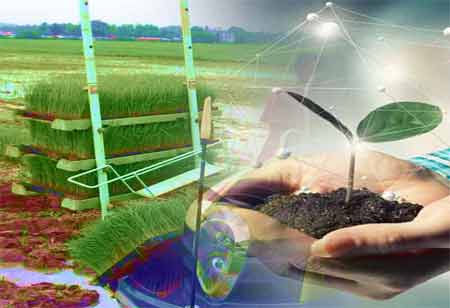Thank you for Subscribing to Agri Business Review Weekly Brief
Innovations Shaping The Future of Horticulture
Innovations in horticulture are at the forefront of shaping the future of agriculture, ushering in a new era marked by technological advancements and sustainable practices

By
Agri Business Review | Friday, February 02, 2024
Stay ahead of the industry with exclusive feature stories on the top companies, expert insights and the latest news delivered straight to your inbox. Subscribe today.
Innovations in horticulture, including digital phenotyping and autonomous greenhouse systems, are revolutionising agriculture. These advancements promise efficiency, reduced manual labour, and a shift toward data-driven, environmentally conscious cultivation practices.
FREMONT, CA: Innovations in horticulture are at the forefront of shaping the future of agriculture, ushering in a new era marked by technological advancements and sustainable practices. As the industry embraces contemporary technologies–from digital phenotyping to autonomous greenhouse systems–the landscape of horticulture is transforming. These innovations promise increased efficiency and reduced manual labour and also pave the way for more data-driven and environmentally conscious approaches to cultivation.
Over the next ten years, there will be a significant change in the greenhouse industry. Though the external look might not change, the interior dynamics are going through a technological revolution. Robots, drones, and sensors are increasingly becoming essential parts that greenhouse operators control with ease using a variety of dashboards. This change is representative of a wider trend in the industry: a move from descriptive growing, in which operators interpret historical data using graphics, to prescriptive growing, in which computers direct behaviour. The ultimate goal is autonomous control, and over the next ten years, an artificial intelligence-run greenhouse that operates on its own will exist. This evolution signals a changing role for growers as the industry embraces innovations and the prospect of fully autonomous greenhouses becomes increasingly tangible.
The adoption of cutting-edge technologies in greenhouse operations is changing the labour market and requiring greenhouse operators to have different skill sets. The shift to autonomous growth will greatly lessen the need for physical labour. Robots will be used to automate routine jobs like harvesting fruit and making outdated traditional practices like scouting for pests and diseases. Scouting robots will locate problems and map them, allowing spray robots to apply plant protection agents precisely. The modern greenhouse, with its advanced technology, requires operators to have a different set of skills. The grower's role is still crucial, but the focus now is on combining traditional horticultural knowledge with technical know-how. The transition involves a departure from rules-based algorithms influenced manually to AI-driven autonomous computer set-points.
There's excitement about several plant sensing technologies being tested in the industry right now. Digital phenotyping and imaging technologies are two examples of these technologies. A state-of-the-art digital phenotyping imaging technique can measure and analyse critical plant phenotypic data. In essence, it monitors how the plant reacts to its surroundings. These technologies will fundamentally change how human crop registration procedures are carried out and will be essential to the creation of data-driven autonomous greenhouses in the future.





